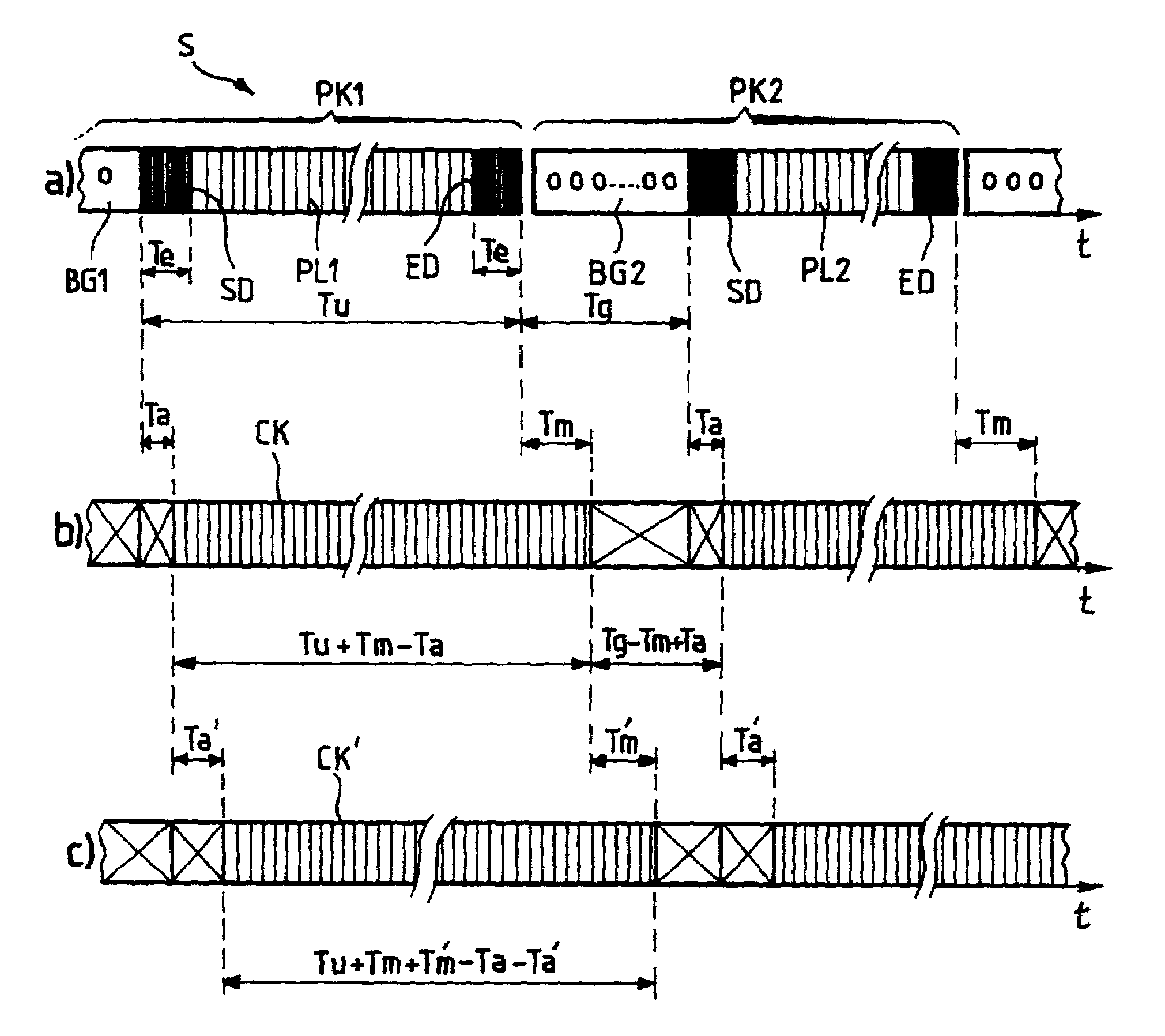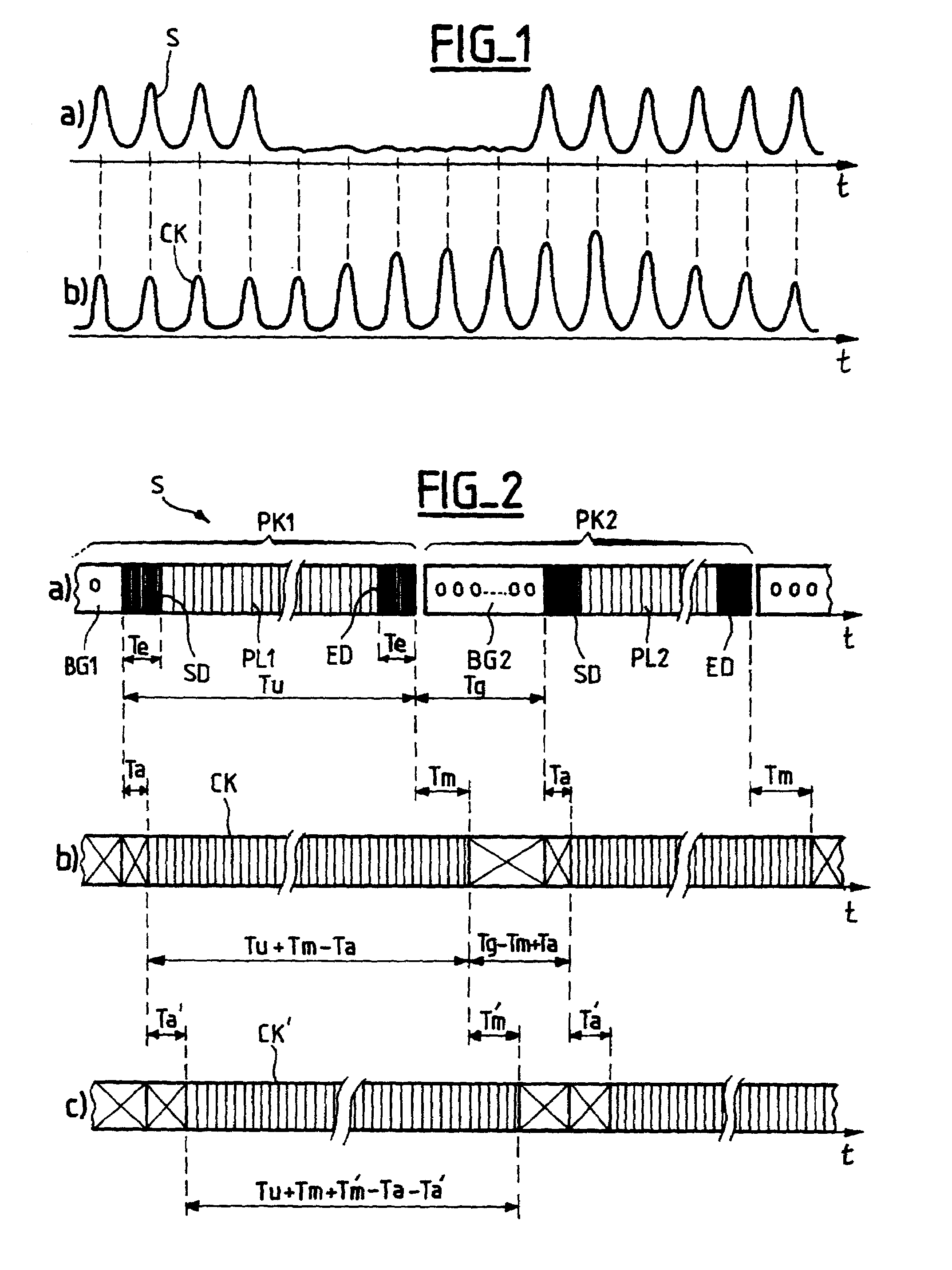Optical clock recovery device for recovering the clock from an optical signal
a clock recovery and optical clock technology, applied in the field of optical telecommunications, can solve the problems of inability to eliminate jitter, less effective regeneration device, and inability to recover clocks from optical signals, and achieve the effect of improving the stability of amplitude and frequency
- Summary
- Abstract
- Description
- Claims
- Application Information
AI Technical Summary
Benefits of technology
Problems solved by technology
Method used
Image
Examples
Embodiment Construction
[0036]The FIG. 2 timing diagrams represent the main signals operative in a clock recovery system according to the invention.
[0037]As shown in timing diagram a), the received signal S comprises successive packets PK1, PK2 each comprising a guard band BG1, BG2 followed by a payload PL1, PL2 containing the information data of the packet. The guard band has a transmission time Tg, called the guard time, during which the optical power is low. The existence of this guard time guarantees a predefined minimum time-delay between the reception of two successive payloads. The transmission time Tu of the payload of each packet is a function of the number of bits in the payload and the bit rate.
[0038]The payload includes a preamble SD at the start, followed by an information field, and finally an end pattern ED. The preamble and the end pattern comprise predefined sequences of successive “1” bits with a corresponding transmission time Te.
[0039]The timing diagram b) of FIG. 2 shows a first clock ...
PUM
 Login to View More
Login to View More Abstract
Description
Claims
Application Information
 Login to View More
Login to View More - R&D
- Intellectual Property
- Life Sciences
- Materials
- Tech Scout
- Unparalleled Data Quality
- Higher Quality Content
- 60% Fewer Hallucinations
Browse by: Latest US Patents, China's latest patents, Technical Efficacy Thesaurus, Application Domain, Technology Topic, Popular Technical Reports.
© 2025 PatSnap. All rights reserved.Legal|Privacy policy|Modern Slavery Act Transparency Statement|Sitemap|About US| Contact US: help@patsnap.com



